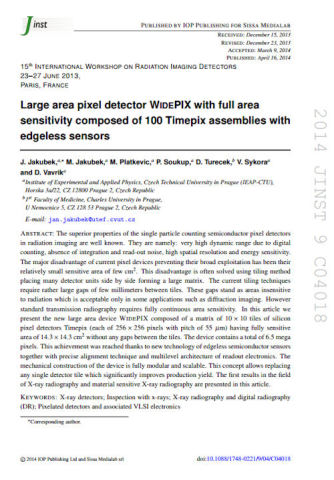Art
Study and characterization of art pieces, namely paintings, using X-ray imaging is becoming an increasingly important area. It is useful for galleries, museums and collectors to improve conservation and preservation methods. It is important for art buyers to reliably authenticate works. It provides detailed data for insurance companies to assess risks involved in art transport.
The main features of photon counting detectors important for imaging of art are the energy sensitivity and dynamic range. Energy sensitivity allows better separation or identification of individual pigments in the painting. That gives art historians and restorers additional level of information that could have been obtained until recent only on synchrotron beamlines. Nowadays, with photon counting detectors, this is possible even with portable imaging setups.
The high dynamic range of photon counting detectors helps to reveal low attenuating thin layers of pigments, varnishes, finish layers and other. Thus, the photon counting detectors have the potential to revolutionize the art research.
The images presented here were taken in the X-ray laboratory of CET Telc in collaboration with IEAP and Arterestauro by J. Jakubek, F. Krejci, I. Kumpova, J. Lauterkranc, D. Vavrik, J. Zemlicka and J. Zivny.





